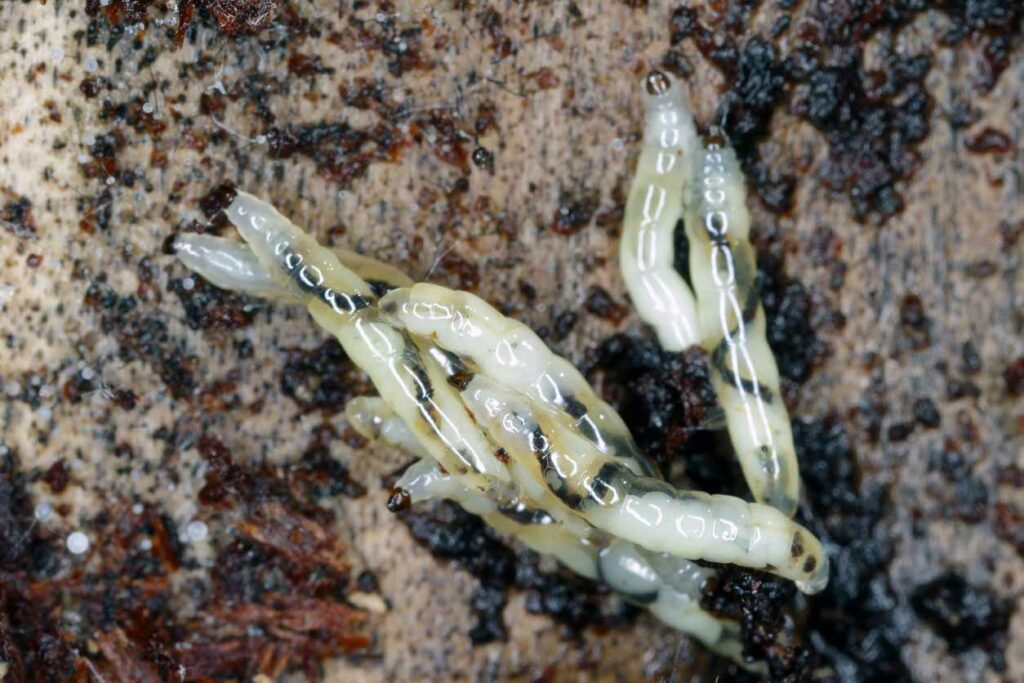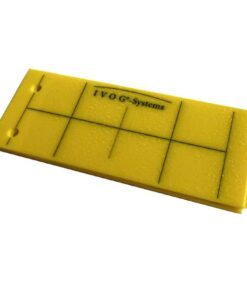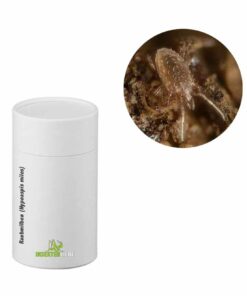News-Magazine
Effective measures against fungus gnats in the terrarium
Oh dear, what are those tiny flies buzzing around in my terrarium? Fungus gnats! A shiver runs down my spine, my hand trembles in horror. Panic breaks out in me! What am I going to do? I throw myself into a social media platform and write in panic: “Help, help, my terrarium is infested with fungus gnats! What am I going to do? My whole life is ruined!” But there you only get the answer: “Don’t worry, it’s nothing bad, also in any case much less annoying than your panic attacks!”
It is quite understandable that the first reaction when discovering fungus gnats in the terrarium can be one of panic. After all, you want to maintain the terrarium as a healthy and harmonious habitat for its inhabitants. However, instead of getting hectic, it is advisable to approach the issue calmly and objectively.
Fungus gnats can multiply rapidly in terrariums, especially if certain conditions are present. Moist soil, organic matter and food remains provide ideal living conditions for fungus gnats. It is important to understand that their presence is not in itself unusual or a cause for concern. They usually do not pose a direct threat to the terrarium inhabitants, but they do to the terrarium plants. Even escaped fungus gnats from the terrarium can settle on houseplants and open a new construction site there. It is therefore advisable to tackle and eliminate the problem.
A look at the way fungus gnats live in the terrarium
The fungus gnat family, scientifically known as Sciaridae, colloquially known as weeping flies, is found in nature mainly in damp habitats such as forests, bogs and wet meadows. These small flies have a black colouration and can reach a size of up to seven millimetres. They are able to lay their eggs preferentially in moist soil. In the field, this typically occurs during the months of May to June, while in terrariums it can occur all year round. A single female is capable of laying up to 200 translucent eggs, which can lead to rapid reproduction.
About a week after the eggs hatch, the fungus gnat larvae emerge. These larvae are about two millimetres long and have a white-glassy appearance with a dark head. They live mainly in the soil and feed on organic material such as dead leaves, fungal mycelium and roots. Due to their feeding behaviour, they belong to the first decomposers and play an important role in the decomposition process of dead plant material. In terrariums where springtails, isopods and centipedes also find their place, they therefore feel particularly at home.

The larvae of fungus gnats can become a problem. If there is a lack of dead plant material and fungal mycelium in the terrarium, the hungry larvae will resort to living plant roots. In doing so, they can cause considerable damage to the beloved terrarium plants. The damaged roots can affect the growth of the plants, lead to a stunted appearance and even cause the plants to die.
It is therefore important to keep an eye on the population of fungus gnats and their larvae in the terrarium and take measures to control them if necessary.
Safety first: Use yellow sheets in the terrarium against fungus gnats with caution
Yellow panels: A possible solution for controlling fungus gnats in the terrarium, but only if there is no danger to the animals living in it.
If you are struggling with fungus gnats in your terrarium and are looking for a suitable solution, yellow boards could be an option. Yellow boards are yellow cards with a sticky surface that can attract and hold adult fungus gnats. Due to their eye-catching colour and sticky material, the flies are attracted to the yellow boards and stick to them, preventing them from flying freely around the terrarium. This can help to reduce the number of flies in the terrarium and thus reduce the nuisance of fungus gnats.
However, before you use yellow sheets in the terrarium, it is extremely important to consider the safety of the animals living in it. Some terrarium animals, especially those that like to climb, may accidentally land on the yellow panels and stick to them. This can lead to injury or even death of the animals. Therefore, it is of utmost importance that you carefully consider the risk to your terrarium animals and resort to alternative control methods if necessary.
To minimise the risk to your animals, there are some precautions you can take. Make sure that the yellow panels are placed out of reach of the animals, for example in the middle of the terrarium lid or in places where the animals cannot normally reach. This will prevent them from accidentally coming into contact with the yellow panels. Also make sure to check the yellow sheets regularly and replace them if necessary once they are covered with fungus gnats to maintain their effectiveness.
If you have any doubts about the suitability of yellow panels for your terrarium or concerns about the safety of your animals, it is advisable to consider alternative methods of controlling fungus gnats.
Predatory mites against fungus gnat larvae: a natural control method
If you are struggling with a fungus gnat larvae infestation in your terrarium, the use of predatory mites could be an extremely effective yet natural control method.
Predatory mites are tiny, predatory mites that feed on various insects and their larvae, including fungus gnat larvae. They can be considered natural enemies of fungus gnat larvae and play a crucial role in reducing the population of these pests. The great advantage of this method is that the predatory mites attack the fungus gnat larvae at an early stage of their development and thus prevent their further reproduction. They practically attack the problem at its root and enable a rapid decline in the fungus gnat population.
To use predatory mites against fungus gnat larvae, they can be specifically introduced into the terrarium. As soon as they are there, they immediately get to work, actively searching for the larvae and using them as a food source. The predatory mites go on the hunt and gradually decimate the population of fungus gnat larvae.
Using predatory mites to control fungus gnat larvae in the terrarium is not only extremely effective, but also extremely environmentally friendly. It is a natural method that restores the ecological balance in the terrarium, naturally without resorting to the use of chemical insecticides. The targeted use of predatory mites can control the pest population, thus maintaining the health of the plants in the terrarium.
It is important to note that the success of predatory mites as natural enemies of fungus gnat larvae depends on several factors, such as the right type of predatory mites, the environmental conditions in the terrarium and the size of the fungus gnat larvae population. Predatory mites come in different species and subspecies, each with their own preferences and specific prey. While some species of predatory mites specialise in certain mites and can therefore be effective against them, others may be less suitable for controlling fungus gnat larvae.
Successful control of fungus gnats in the terrarium: patience and correct measures are the key
Infestations of fungus gnat larvae in the terrarium can be worrying at first, but with the right measures and a sound approach, the problem can be successfully controlled. Yellow boards are an effective way to trap adult fungus gnats in the terrarium and reduce their population. An alternative for controlling fungus gnat larvae is predatory mites, which act as natural enemies of the larvae and help control the pest population in the terrarium. These tiny predatory mites feed on various insects and their larvae, including fungus gnat larvae. They can be selectively introduced into the terrarium to control the larvae and thus contain the infestation. With patience, the right approach and careful implementation of the measures, you can successfully control the fungus gnat larvae and create a healthy terrarium in which your plants and animals can thrive optimally.
If you have any further questions, feel free to ask us in the comments below the article.





